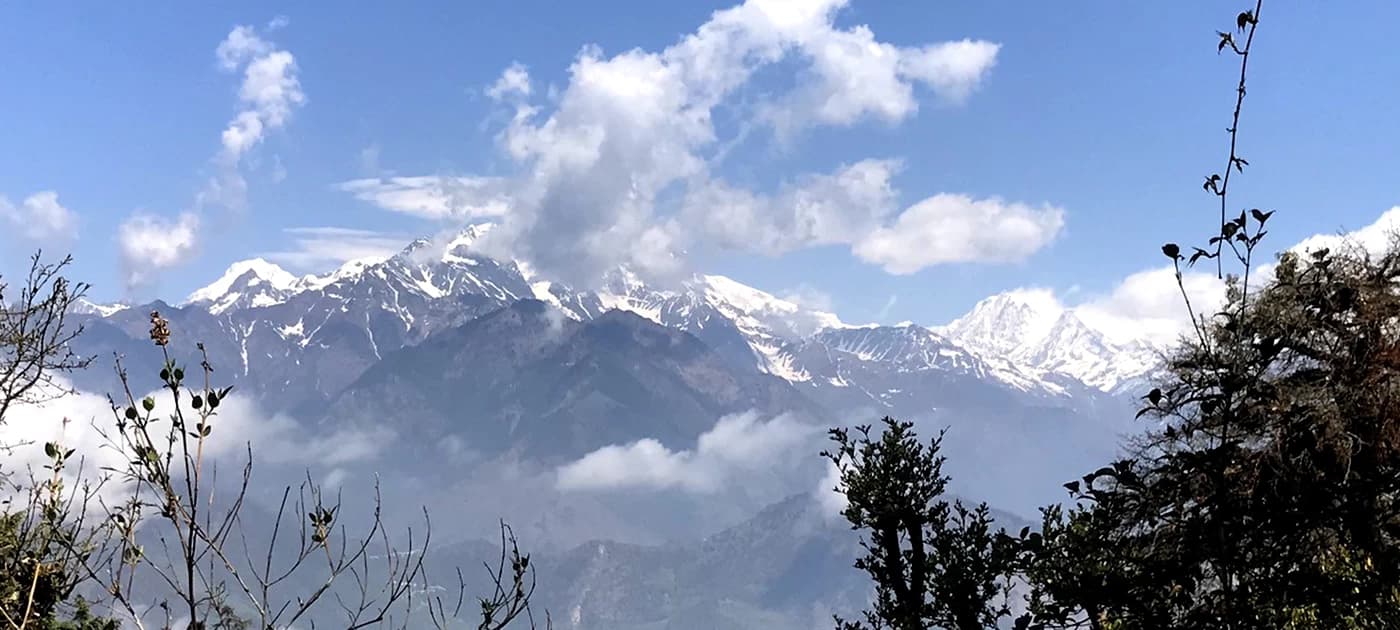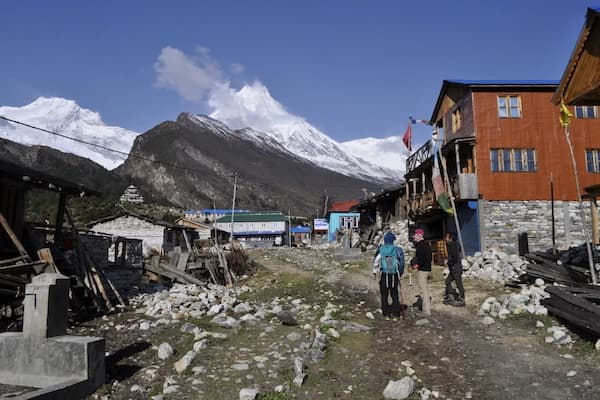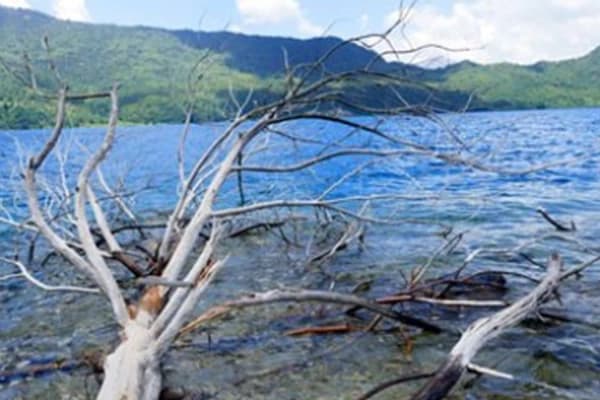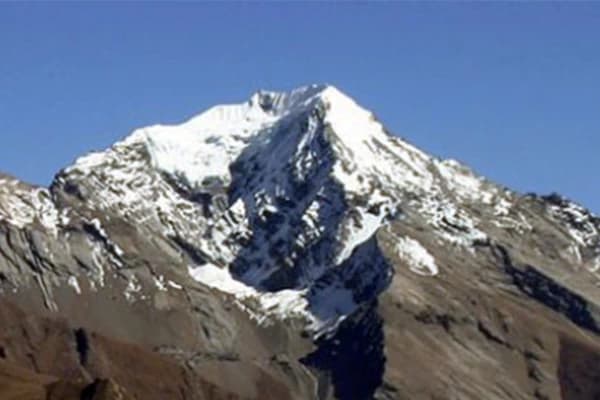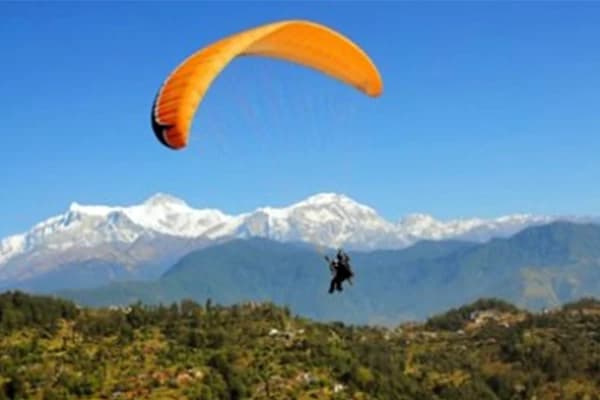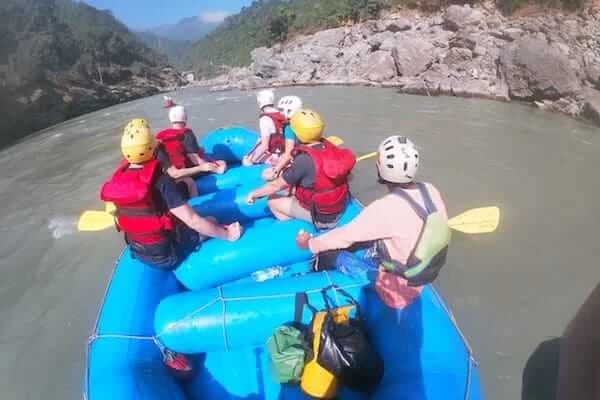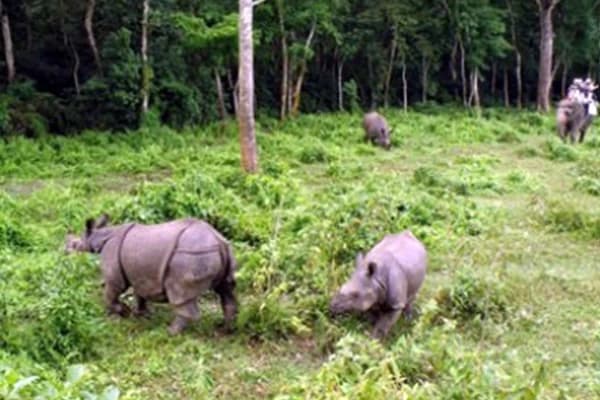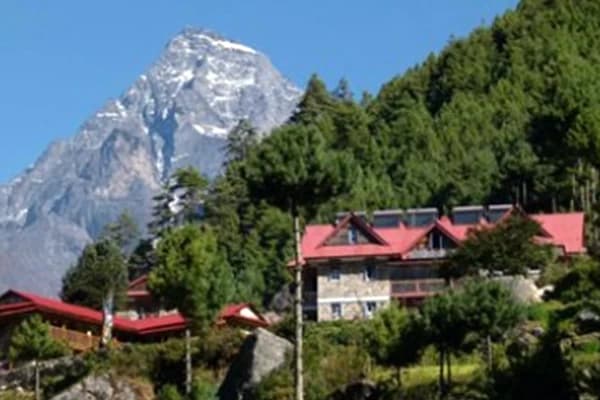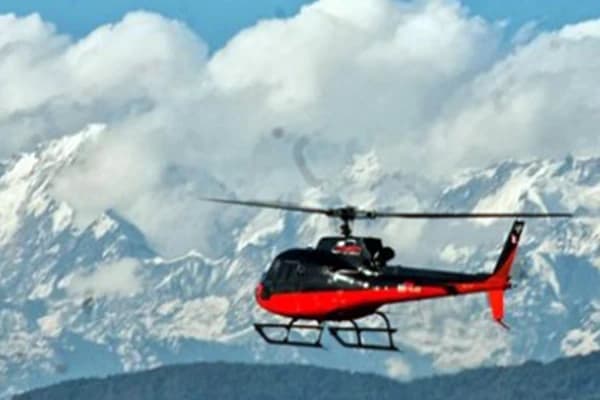A landlocked country situated in South Asian Region between two giants: China and India, Nepal is extended within 147,181 sq. km. Being a naturally alluring nation, Nepal has eight out of ten world’s tallest peaks and around 6,000 freshwater rivers and rivulets. Surrounded by India from three sides and China in the north, Nepal has a lot of natural and cultural tourist-calling sites. Nepal is a tourist hub for experiencing feats from rafting to mountaineering; from sunrise and sunset view to bird-watching. Variation in climatic regions has resulted in variation in lifestyle, wildlife and vegetation supporting each other in a mutual way.
Despite its small size, you can find all major climates types: frigid, moderate and torrid in Nepal. Spread between the elevation of 59m and 8,848m, Nepal is geographically divided into three regions namely Terai, Hilly and Himalayan (Mountain). Terai region ranges from 59m to 1,000m east west covering 19% of total land mass living around 8% population. Hilly region which extends between 1,000m and 3,000m covers 65% of land inhabiting 42% of population. Similarly, Terai region shelters more than 50% population though it covers 16% of total land which ranges above 3,000m high. Trans-Himalayan region which has also supported human settlement areas lies above 4,800m altitude in the northern part bordering with Tibetan Plateau.
Of course, climatic region determines the quantity of average rainfall every year and other natural phenomena like wildlife and vegetation. The Himalayan region receives very less rainfall and has rocky topography that lacks fertile soil for crops production. Animal husbandry, dairy products, herbal products and tourism trade are the main occupation of the people living in High Himalayan region. Due to moderate climate, Hilly region receives considerable quantity of rainfall and supports crops and fruits production. The main occupations held by the Hilly people are animal husbandry, agriculture, business, service and foreign employment to different countries.
Despite the least landmass, Terai region has more than 50% of people who are engaged in agriculture, factory works, animal husbandry, fish rearing and other activities. Terai is said to be the ‘Granary of Nepal’ as the fertility of the terai soil is very high and large amount of crops is produced. As Terai region is joined with India having open border system, many people go to India for working in different sectors from housemaid to government service. Most industrial zones are established in Terai region as the topography is quite supportive for establishing infrastructures of development.
A federal democratic republican country, Nepal is also known as a multi-ethnic, multi-lingual and multi- cultural nation practicing all-around tolerance. There are people from 125 ethnic varieties with 123 recorded languages and following ten religions of their choice and comfort. Nonetheless, there is no record of any violence regarding ethnicity, language and religion which signifies ‘Unity in Diversity’. The very ethnic and linguistic varieties have been one of the major attractions of Nepal visit for the tourists all around the globe. It is really a fun to learn different names for the same thing in different languages and regarded the same thing differently.
As the national anthem of Nepal indicates, it is a wreath made up of sewing hundreds of varieties of flowers into a single one. As PN Shah, the builder of Modern Nepal has quoted in his Holy Counsel; it is a common garden for a variety of blooming flowers. Diverse culture and tradition followed by multiple ethnic communities really reflect the Rainbow made up in union of seven distinct colours. Lord Buddha, the Founder of Buddhism that focuses on co-existence in a peaceful environment and non-violence, was born in Lumbini, Nepal in 623 BC. And the travel enthusiasts are very much keen in visiting Nepal, the land of diversity at least once in their lifetime.
The feasts and festivals of one ethnic community differ from the other while some are observed together but they participate in each other’s occasions. People from all ethnic communities and religions feel a kind of ownership in celebrating the special occasions of other communities. You can also find deliciously mouthwatering cuisines according to the ethnic community, their culture, tradition and festivals. The culinary of a community differs from the others and special dishes are prepared on feasts and festivals to serve the guests. Similarly, the way of hospitality is one of the most remarkable reasons you like visiting Nepal where guests are regarded as God.
Nepal’s natural and cultural diversity has ensured abundant opportunities for tourism that assists to uplift the country and the people’s lifestyle. Tourism, a smokeless industry is one of the backbones for Nepal’s overall infrastructure and economic development in fast pace. Almost all types of tourism can be well developed in Nepal if the government and the private sector collaborate with each other. The UNESCO World Heritage Sites like Kathmandu Durbar Square, Patan Durbar Square and Bhaktapur Durbar Square encourage historical tourism. Other historical sites like palaces and forts located all over the country can really benefit historical tourism in Nepal.
Swayambhunath Stupa (the Monkey Temple), Bouddhanath Stupa and Lumbini are the strongest bases for religious tourism in Nepal as they attract Buddhists living globally. Pashupatinath Temple and Changunarayan Temple have opened up a great prospect for religious tourism in Nepal. No matter what religion you are following and admiring, but you would love to hear about the myths concerned with other religion. This type of tourism promotes the national profile among the international community and proves to be a reliable base for changing people’s economy.
If you love watching different species of birds in Nepal, bird watching tour is the best option for collecting details about birds. Out of 850 birds species found in Nepal, most are found around Nagarjun, Godavari, Phulchowki and Taudaha Lake in the Kathmandu valley. In these sites you can see the endemic species as well as migrating species of birds in the appropriate seasons. Koshi Tappu Willife Reserve, Chitwan NP and Bardiya NP are the best destinations for bird watching tour to sight varieties bird species. Birds like Lophophorus, Nepal’s national bird, Himalayan vulture, Giant Hornbill, Great Salty Woodpecker and Long-tailed Broadbill are found in Annapurna and Everest Region.
Adventurous tourism in Nepal is one of the most engaging types of tourism that is fostering day by day. Nepal has many challenging snowcapped peaks in the High Himalayas, foothills and fast-flowing rivers good for white water navigation. Similarly, the Great Himalayan Trail (GHT) extends from Kanchenjunga east to Humla west is also important foundation for tourism in Nepal. One of the world’s longest Himalayan trails, the GHT is 1,700 km long having coverage from sub-tropical to alpine forests. The GHT passes through lush valleys to typical Buddhist and Hindu villages in the high Himalayas with snow-white mountains.
Mountaineering and trekking through different Himalayan routes of Nepal adds up to the lifetime experience of the travelers. Everest Region trekking, Annapurna Region trekking, Manaslu Region Trekking, Dolpo Region trekking are some of the fascinating activities under adventurous tourism in Nepal. You can grab the opportunities for climbing the summit of Mt. Everest, Mt. Baruntse, Mt. Lhotse, Ama Dablam, Island Peak and Mera Peak. Apart from this, you can involve in hiking and from long to short trekking in various popular Himalayan regions for wonderful memory.
Whitewater rafting is yet another adventurous tourism for the tourists who visit Nepal in the suitable seasons. If you want to feel the taste of sailing through fast flowing river of Nepal, you can join whitewater rafting along the major rivers. You can find customized white water rafting itinerary designed for different packages by the trekking agencies in Kathmandu. The Sunkoshi, the Karnali, the Tamur, the Trishuli and the Kali Gandaki are some of the world famous rivers for whitewater rafting. Kayaking in the continuous river waters of the Marsyangdi, the Tamur, the Modi Khola and the Bhote Khoshi is still more extraordinary.
If you prefer physically and mentally demanding sport during your Nepal visit, you can try rock climbing for your lifetime achievement. The major rock climbing sites in Nepal are (Kathmandu) Nagarjun Forest Reserve, Hattiban, Kakani, (Tanahun) Bimal Nagar and (Khumbu) Thame. Next, to have unlimited fun, you can organize epic mountain biking trip through some crisscross and easy trails in Nepal. While in mountain biking trip, you can explore off the beaten and rugged path around the region of your comfort and desire. Some of the top epic mountain biking trails are the Kathmandu valley, Pokhara to Kathmandu, Annapurna Circuit, Mustang and Lower Everest Region. For the mountain bikes at reasonable cost and best condition, contact the representative of your trekking agency.
Jungle safari in Nepal is another entertaining tourism activity which you may like to have during your visit here. Jungle safari rewards you with a fantastic experience for a close look at the endangered but dangerous species of animals. Basically, there are four major locations for providing you with the best facilities of jungle safari via the jeep or tamed elephants. Jungle safari in Chitwan National Park and Bardiya NP gives you a rare chance to spot rare species of animals, birds and plants. One-horned rhino, Bengal Tiger, sloth bear, wild buffalo and elephant are some of the interesting but threatening animals seen there. Similarly, you can do jungle safari in Suklaphant National Park and Koshi Tappu Wildlife Reserve for a heart-touching glimpse of flora and fauna. Doing jungle safari there, you see Indian leopard, swamp deer, Asiatic elephant, spotted deer, wild boar and sloth bear very close. Koshi Tappu Wildlife Reserve, also known as ‘Home of Birds’ offers you bird watching tour, don’t miss the rare chance!
You can fly directly to the Tribhuvan International Airport, Kathmandu from your home country or come by roadways from India. As it may be a bothering job to travel by road, we advise you to book a direct ticket to Kathmandu for comfort. You can reach different destinations within Nepal either by air or by bus but it’s all up to you. Flying to a destination in Nepal consumes less time but is expensive whereas driving is cheap but time consuming. Means of transportation depends upon the weather of the day, vacation you have and your Nepal visit budget. You can even book some private vehicles for your luxury and ease so that you can travel on your own.
Accommodation facilities in Nepal varies from teahouse to five-star hotels in the major cities like Kathmandu and Pokhara and other long and short trekking routes. Generally, the accommodation cost in Nepal ranges from $5 to $35 in the trekking routes like Annapurna Region and Everest Region. However, if you choose a splurge accommodation, you will have to pay as low as $290 per night at hotels like Dwarika’s in Kathmandu. In Pokhara, Chitwan and Namche Bazaar, the splurge accommodation at a hotel or resort costs up to $150 per night. The budget guesthouses charge you up to $20 per night for your comfortable accommodation during your stay with them.
Travelling to Nepal is possible for the tourists from all over the world to spend their vacation joyfully throughout the year. A year in Nepal is also divided into four seasons: Spring-March to April; Summer-June to August; Autumn-September to November and Winter-December to February. The best time to visit Nepal is Spring and Autumn which are comparatively better than other two seasons. Nepal visit in spring offers you with long days, clear sky and best visibility of the snowcapped mountains and the landscapes. While you are trekking through high Himalayan region, you see the blossoming flowers like rhododendrons smartening the forests on the trekking trails.
Another best season to visit Nepal is Autumn when you find the most favourable weather, moderate temperature, warm days and cool nights. More importantly, this is the festive season throughout the country as most of the major festivals in Nepal fall in Autumn. The incredibly clear view of the snow-white mountains and crystal landscapes will really strike your mind. In winter, you can visit the lower Himalayan region as the trail is blocked due to heavy snowfall for further ascent. Visiting Nepal in summer is good for sightseeing around the Kathmandu and Pokhara Valley including going jungle safari in different national parks. The most rewarding side of visiting Nepal in summer is discovering the rainshadow areas like Manang, Mustang and Dolpo region.
You must have a Nepal visit visa in any season and can spend maximum 150 days in a calendar year. You can find a visa on arrival from the Tribhuvan International Airport, Kathmandu and border check points with India and China. To get visa on arrival, you must have a passport having at least 6 months validity and one passport-photo. Prior visa application is compulsory for the nationals from Afghanistan, Cameroon, Eswatini, Ethiopia, Ghana, Iraq, Liberia, Nigeria, Palestine, Somalia, Syria and Zimbabwe. And the citizens from the SAARC countries other than India, get 30 days’ free Nepal visit visa. The visa fee must be paid in either in the currency of US, EU, Switzerland, UK, Australia, Canada, Hong Kong, Singapore or Japan.
Visa and Fee Details:
Tourist Visa Details
|
Tourist Visa Details |
Visa Fee Details |
|
15 Days (Multiple Entry) 30 Days (Multiple Entry) 90 Days (Multiple Entry) Visa Extension (within valid visa period) Visa Extension (with Multiple Entry) Visa Extension (After Visa Expiration) |
$ 30 $ 50 $ 125 $ 3 per day Additional $ 25 Late fee $ 5 per day |
[Source: welcomenepal.com]
Nepal visit grants you one of the most admirable occasions to have dazzling glimpses of the natural landscapes and snowcapped peaks very closely. Other important aspect of Nepal visit is to grow intimacy with the local people and their typical lifestyle, culture and tradition. Nepalese people, especially living in the high Himalayan region are simpleminded, honest, hardworking and courteous. They regard the tourists as their deity and show the best hospitality and respect from the very bottom of their hearts. You can talk to them in a friendly manner so that they give you some information about their culture and tradition. You can participate in their festivals if the time is favourable; can take snaps in their cultural attire and see their heritage also. You can do all the socially accepted activities like singing, dancing, eating, etc. with the people for your best memories.
To assist your Nepal visit, there are hundreds of travel and trekking agencies established in Kathmandu and Pokhara at your service. You can book the customized trekking and tour packages to different locations of Nepal like Everest Region, Annapurna Region and Manaslu Region. The travel and trekking agencies in Kathmandu and Pokhara are opened and run by the experts in the related fields. They sell various tour and trekking packages at the most reasonable prices to the tourists who can book the right packages online. Nevertheless, don’t forget to check their Nepal Government registration details to be sure the information they provide is valid and authentic!
Nepal is the most beautiful country offering diverse experiences within a short span of time at the cheapest cost in the world. You can have multi-dimensional knowledge by exploring the natural sites to cultural and religious heritages enlisted in UNESCO World Heritage Site. Make Nepal visit plan to spend the vacation by looking at the snowcapped mountains, diverse landscapes and cultural residential areas. Every penny you spend for Nepal visit is an investment to gain the maximum profit through experiences from sub-tropical to alpine region; fertile land to desert like region of Upper Mustang region. Gorgeousness of the Himalayan country Nepal is calling you to explore the snowcapped peaks, unexplored hidden valleys and enthralling landscapes! Don’t forget to respond to the calling by booking a Nepal visit package via our trekking agency!
